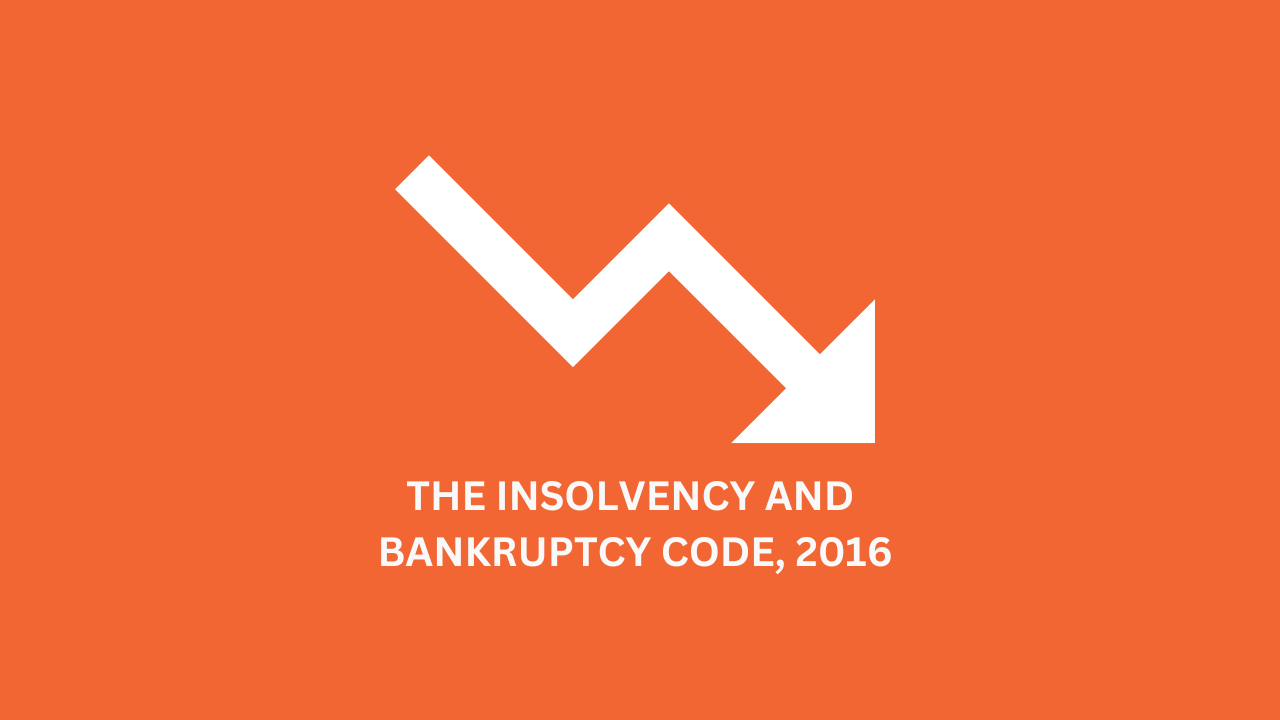
Private placement of securities is a discreet yet powerful method for companies to raise capital while sidestepping the rigorous regulatory demands of public offerings. This financial practice allows businesses to offer stocks, bonds, and other investment instruments to a select group of investors, often accredited individuals or institutions. This exclusivity provides companies with greater control over their investor base, aligning their financial goals and strategies with those who share their vision.
In this blog, we explore the concept of private placements, exploring the various forms of securities involved, the regulatory framework and legal provisions that govern them in India, and the step-by-step process companies undertake to conduct a successful private placement. We’ll also examine the benefits and considerations associated with this financing method, shedding light on why it’s a popular choice for many enterprises. Furthermore, we’ll discuss the importance of transparency and reporting in maintaining trust and credibility within the private placement market. If you’re curious about the intricacies of raising capital privately or seeking insights into the Indian private placement landscape, this blog is your comprehensive guide.
Private placement of securities in India offers companies a discreet means to raise capital from select accredited investors, bypassing the rigorous regulations of public offerings. It involves various securities like equities, debt instruments, preferred stocks, and convertible securities. The process includes assessing capital needs, regulatory approvals, due diligence, and allotment. While private placements offer benefits such as limited regulatory requirements, access to capital, and customization, they also have limitations, like a restricted investor base and potential illiquidity. Transparency and reporting are crucial, ensuring trust and regulatory compliance. India’s regulatory framework, overseen by SEBI, maintains the integrity of this vital financial practice.
Private placement of securities are financial transaction that allow companies to raise capital by offering its stocks, bonds, or other investment instruments to a select group of investors, rather than the general public. This approach is often favored by companies seeking to secure funding while avoiding the extensive regulatory requirements associated with public offerings.
The “private” nature of this process implies that the securities are offered to a limited number of investors, typically those considered accredited investors. Accredited investors are individuals or institutions with a substantial amount of financial resources and a higher level of investment knowledge and sophistication. This exclusive approach provides companies with more control over the selection of their investors, allowing them to target individuals or organizations that align with their financial goals and business strategy.
Private placements come in various forms, including equity (common or preferred stocks) or debt (bonds or promissory notes) securities. Companies considering a private placement typically work with financial professionals, such as investment banks or brokerage firms, to facilitate the transaction. These professionals help structure the offering, determine the terms and conditions, and identify potential investors.
Equities-: Equities, commonly known as stocks or shares, represent ownership in a corporation. When individuals or entities purchase equities, they acquire a portion of the company and become shareholders. Shareholders have the potential to profit from the company’s success, usually through capital gains and dividends. Capital gains arise when the stock’s market value increases, enabling shareholders to sell their shares at a higher price than they initially paid. Dividends are periodic payments made by the company to its shareholders, typically sourced from profits. Publicly traded equities are available on stock exchanges, while privately placed equities are offered to a select group of investors, such as venture capitalists or private equity firms. Private placements provide companies with an alternative means of raising capital while controlling who holds ownership stakes in the company. These private placements may come with restrictions on resale, promoting a degree of privacy and control.
Debt Instruments-: Debt instruments encompass a variety of financial securities representing loans provided by investors to an entity, which can be a government, corporation, or individual. These instruments include bonds, promissory notes, and certificates of deposit, among others. Investors in debt instruments essentially lend money to the issuer and, in return, receive regular interest payments and the eventual return of the principal amount at a specified maturity date. Private placements of debt instruments involve offering these securities to a limited number of accredited investors or institutions directly, bypassing the broader public bond market. This approach grants issuers greater flexibility in setting the terms and conditions of the debt but may result in higher interest rates, reflecting the increased risk inherent in private placements.
Preferred Stock-:
Preferred stock is a unique type of equity security that combines characteristics of common stock and debt instruments. Holders of preferred stock have a claim on a company’s assets and earnings that ranks above common shareholders but below bondholders in case of bankruptcy or liquidation. Preferred stockholders typically receive fixed dividends, and their voting rights may be limited or non-existent compared to common shareholders. Private placement of preferred stock involves offering these shares to a select group of investors, often to secure capital without diluting the ownership of existing common shareholders. This method allows companies to raise funds while offering investors a degree of security and predictable income, making it an attractive option for certain investors and issuers.
Convertible Securities-: Convertible securities are hybrid financial instruments that can be exchanged for a different security, most commonly common stock, based on a predetermined conversion ratio and price. This conversion feature provides investors with flexibility, enabling them to switch from debt or preferred stock to equity if the issuer’s stock performs well. Private placements of convertible securities are a popular method for companies to attract investment capital, as they offer investors the potential for capital appreciation through conversion, while providing the issuer with a source of funding. The specific terms of convertible securities, such as the conversion ratio and price, are established during the offering, allowing them to be tailored to meet the needs of both the issuer and investors. This adaptability makes private placement of convertible securities a favorable option for companies seeking financing while managing the potential dilution of existing equity.
In India, the private placement of securities is subject to a well-defined regulatory framework and legal provisions to ensure transparency, fairness, and investor protection. The primary regulatory authority overseeing private placements is the Securities and Exchange Board of India (SEBI). SEBI plays a crucial role in regulating and supervising the issuance of securities in the country.
The legal provisions for private placement are primarily governed by the Companies Act, 2013, and the SEBI (Issue of Capital and Disclosure Requirements) Regulations, 2018. Companies Act, 2013 lays down the foundation for private placements, specifying the conditions under which companies can offer securities to a select group of investors. These provisions help ensure that the interests of existing shareholders are protected and that the private placement is conducted in a fair and transparent manner.
SEBI’s regulations are more specific and provide detailed guidelines for the issuance of various securities, including equity shares, debentures, and preference shares, through the private placement route. These regulations mandate compliance with disclosure requirements, eligibility criteria for issuers and investors, and pricing norms to prevent unfair practices.
Additionally, SEBI mandates that issuers obtain credit ratings for certain securities, and private placement offers are subject to strict reporting and filing requirements. The regulatory framework also includes provisions for penalties and enforcement actions against companies that do not comply with these regulations.
The regulatory framework and legal provisions for private placement of securities in India are designed to strike a balance between facilitating capital-raising for companies and protecting the interests of investors. SEBI’s oversight and the Companies Act, 2013, work in tandem to ensure that private placements are conducted with integrity, transparency, and adherence to investor protection norms. These provisions contribute to the overall stability and trustworthiness of India’s financial markets.
Determine the Need for Capital-: In this preliminary step, the company meticulously evaluates its capital requirements. This entails a comprehensive financial analysis to determine the exact amount of funding needed to achieve specific objectives. These objectives may encompass financing expansion initiatives, retiring existing debt, or supporting daily operational needs. The company’s ability to accurately assess its capital needs is vital as it forms the foundation for structuring the private placement offering.
Identify Eligible Investors-: Identifying the right set of investors is a critical aspect of private placement. In India, the list of eligible investors typically includes institutional investors, qualified institutional buyers (QIBs), and high-net-worth individuals. To select the most suitable investors, the company must consider the investor’s risk tolerance, investment horizon, and alignment with the company’s industry or business model. These factors ensure that the placement is directed towards investors who are more likely to understand and support the company’s objectives.
Obtain Regulatory Approvals-: Before initiating the private placement, a company is required to secure regulatory approvals from the Securities and Exchange Board of India (SEBI), the primary regulator for securities markets in India. This involves a detailed submission of the offering documentation and disclosure materials to SEBI for review and approval. The regulatory oversight ensures that the placement is conducted in accordance with applicable laws, safeguarding the interests of both the company and the investors.
Prepare an Information Memorandum-: The information memorandum stands as the cornerstone of the private placement process. It is a comprehensive document that encompasses a broad spectrum of information about the company. This includes details about its business operations, financial performance, future growth prospects, and the specific terms and conditions of the private placement offering. Crafting this document necessitates thoroughness and accuracy to provide potential investors with a well-rounded view of the company.
Due Diligence-: Due diligence is an exhaustive and meticulous process that involves a close examination of the information presented in the information memorandum. This process is often conducted with the support of legal and financial advisors who meticulously review the company’s records, financial statements, and other relevant data. The goal is to ensure that all the information presented is accurate, complete, and complies with legal and regulatory requirements. Rigorous due diligence builds investor confidence and mitigates the risk of legal issues down the line.
Offer and Allotment-: Following due diligence and regulatory approvals, the company proceeds to extend a formal offer to eligible investors. This offer spells out the terms and conditions of the private placement, including the type of securities offered, the issue price, and the timeline for subscription. Interested investors then submit their subscription forms, specifying the amount they intend to invest. The company subsequently reviews these subscriptions and allots securities based on the subscriptions received, taking into account any over-subscription or under-subscription as necessary.
File Disclosures with Regulatory Authorities-: Once the allotment of securities is completed, the company is obligated to file a series of documents and disclosures with regulatory authorities, prominently including SEBI and the stock exchanges where the securities are listed. These filings serve to provide transparency and compliance with regulatory guidelines, ensuring that investors have unfettered access to crucial information about the private placement, thereby promoting transparency and regulatory compliance.
Receive Funds and Issue Securities-: After the allotment process is finalized, the company receives the funds invested by participating investors. Simultaneously, the securities issued in the private placement are credited to the investors’ dematerialized (demat) accounts. These demat accounts provide a secure and electronic way for investors to hold and trade securities. With the raised capital in hand, the company can proceed to utilize it for the purposes outlined in the private placement, such as funding growth projects, paying off debt, or supporting working capital needs.
Limited Regulatory Requirements-: Private placements in India are subject to fewer regulatory obligations and disclosures compared to public offerings. This streamlined regulatory process reduces the time and resources required for compliance, making it an attractive option for companies seeking a faster capital-raising method.
Access to Capital-: Private placements allow companies to raise funds from a select group of investors, including institutional investors and high-net-worth individuals. This can be advantageous when a company requires capital without the need for an extensive marketing campaign or the complexities associated with a public offering.
Customization-: In a private placement, issuers have the flexibility to customize the terms and conditions of the securities they offer. This means tailoring the investment to meet the specific needs and preferences of the investors, which can be appealing for both issuers and investors looking for unique arrangements.
Confidentiality-: Private placements offer a higher level of confidentiality. Since they are not subjected to the same level of public scrutiny and disclosure as public offerings, companies can safeguard sensitive information and strategic plans, which is especially crucial when dealing with proprietary or confidential data.
Cost Efficiency-: The costs associated with a private placement are generally lower than those of a public offering. This includes reduced underwriting fees, marketing expenses, and regulatory compliance costs. This cost efficiency can make private placements an economically viable option for raising capital.
Limited Investor Base-: Private placements restrict the number of investors to a select group. While this can be advantageous in some cases, it can also limit the pool of available capital. Companies must carefully target and choose the right investors to ensure the success of the placement.
Illiquidity-: Securities issued through private placements may be less liquid than publicly-traded securities. Investors in private placements may face challenges when trying to sell their holdings since there isn’t a readily available secondary market for these securities.
Disclosure Requirements-: Although private placements have reduced regulatory requirements compared to public offerings, issuers are still obligated to provide comprehensive information to potential investors. The level of disclosure depends on the type of securities and the nature of the offering, and there may be ongoing reporting requirements to consider.
Risk of Exclusivity-: Relying on a small group of investors can lead to concentrated ownership. This concentration may result in potential conflicts of interest, governance issues, and limited diversification for the company. It’s important to manage these risks effectively.
Eligibility Criteria-: Private placements in India often come with eligibility criteria that may limit participation to sophisticated or institutional investors. This exclusion can disadvantage retail investors, who may miss out on certain investment opportunities, and also affect the overall diversity of the investor base.
Transparency and reporting play a pivotal role in the private placement of securities in India, ensuring the integrity and credibility of this crucial facet of the financial market. Private placements involve the issuance of securities to a select group of investors, often institutional, without the need for extensive public disclosures. However, maintaining transparency is critical to safeguarding the interests of all stakeholders involved, including investors, companies, and the regulatory authorities.
First and foremost, transparency in private placements helps build trust among investors. When companies in India provide clear and comprehensive information about the terms, risks, and financial health of the offering entity, it empowers investors to make informed decisions. This trust is indispensable for attracting capital and fostering long-term relationships with investors, which is particularly significant for startups and emerging enterprises.
Furthermore, regulatory compliance is paramount. The Securities and Exchange Board of India (SEBI) imposes stringent reporting requirements on companies involved in private placements, mandating the disclosure of material information, financial statements, and other relevant data. Adherence to these regulations ensures that companies act in accordance with the law, mitigating the risks of fraud and misconduct.
Companies in India maintain transparency in private placements through several mechanisms. Firstly, they prepare an Information Memorandum (IM), a comprehensive document that discloses all relevant information about the company, its business operations, financial performance, and the intended use of funds. This document acts as a vital source of information for investors.
Secondly, companies are required to conduct due diligence to ensure the accuracy of the information they provide. This includes financial audits, legal assessments, and other forms of verification to ensure that the information disclosed is both accurate and up-to-date.
Moreover, companies often engage in discussions and meetings with potential investors, enabling them to address queries and concerns directly. This open communication fosters trust and allows investors to gain a deeper understanding of the investment opportunity.
Transparency and reporting are the bedrock of private placement of securities in India. They protect the interests of investors, ensure regulatory compliance, and facilitate fair and efficient capital raising. Companies in India maintain transparency through the diligent preparation of IMs, rigorous due diligence, and open communication with investors, ultimately contributing to a robust and trustworthy private placement market.
Private placement of securities stands as a vital and dynamic facet of India’s financial landscape, offering companies an effective means to raise capital while navigating a path distinct from the demanding regulations of public offerings. This discrete approach, extended to a select group of accredited investors, grants businesses more control over their investor base, aligning financial objectives with those who share their vision.
Private placements encompass a diverse array of securities, including equities, debt instruments, preferred stocks, and convertible securities, each tailored to meet the unique needs of both issuers and investors. While this method provides numerous benefits, such as reduced regulatory burdens, access to capital, and customization, it also carries considerations related to exclusivity, illiquidity, and disclosure requirements.
India’s regulatory framework and legal provisions, under the vigilant eye of the Securities and Exchange Board of India (SEBI) and the Companies Act, 2013, provide the necessary checks and balances to ensure fairness, transparency, and investor protection. The meticulous step-by-step process, from determining capital needs to fund utilization, lays a strong foundation for the success of private placements.
Transparency and reporting emerge as the cornerstone of this financial practice, fostering trust among investors and maintaining integrity within the private placement market. Companies’ commitment to providing comprehensive information, engaging in due diligence, and adhering to SEBI’s stringent requirements culminate in a robust and trustworthy ecosystem for capital-raising.
In a dynamic and evolving financial landscape, private placement remains an essential tool for companies seeking to secure funding while preserving their financial goals and strategies. This comprehensive guide sheds light on the intricate world of private placements in India, empowering businesses and investors to make informed decisions and contribute to the growth and vibrancy of the nation’s economy.








